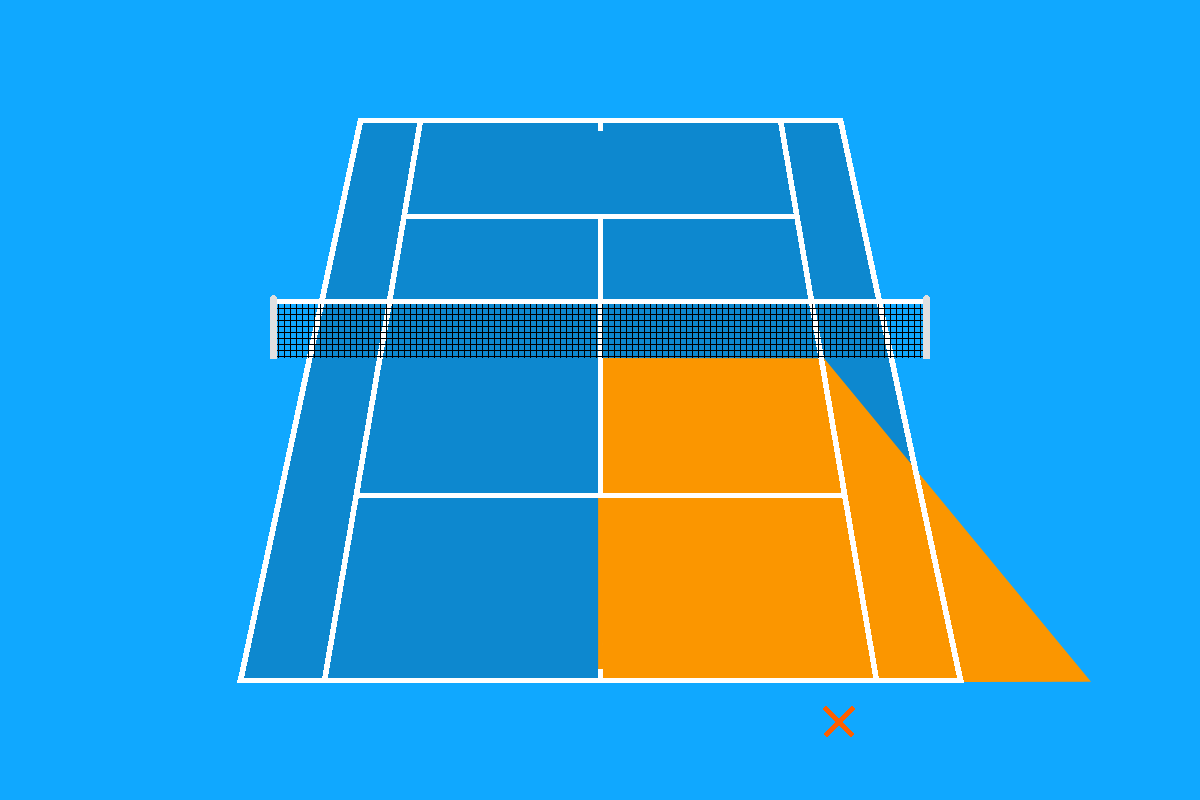5 Tips to Improve Your Return
About half of all rallies are decided with the return. That’s why it has a high relevance in tennis besides the serve. While the server opens the rally first, the return player’s job is to keep the ball in play.
In general, the return is a stroke that every tennis player should practice regularly. A big misconception is that the return plays like a forehand or backhand. This mistake often results in a large number of points being lost.
To prevent this from happening to you, we will now explain what a real return has to look like.
Contents
1. Position
2. Preparation
3. Variation
4. Technique
5. Tactics
1. Position

Overall, as a return player you have a relatively large area to cover when your opponent serves. You can see in the diagram that your opponent can play the ball both through the middle and far out wide. Since the reaction time in this situation is very short, we do not recommend to stand in the middle of the court. Your opponent would then simply serve out wide and hit an ace.
So your position plays an important role in the return. It depends mainly on the serve of your opponent. Does he serve the ball at high speed or more slowly? Does he like playing a kick serve or a slice serve? Unfortunately, you do not know in advance where the ball will land next. You should therefore choose a neutral starting position from which you can run quickly in all directions.
Basically, a good position is close to the sidelines of the singles court. Please note that this is not a fixed point, but only an orientation guide. If your opponent serves harder, take a few steps back. If your serve is slower, take a few more steps forward along the line.
2. Preparation
After you have chosen your position, get ready for the return. You now take a wide stance with your legs and bend your knees. Additionally you bend your upper body forward. This stable position allows you to hit the ball with full power immediately.
Basically, you hold the tennis racket in front of your body with both hands. The grip depends on your own preference. You can choose either the forehand or the backhand grip. Or you can choose a middle way between the two grips. It is important that you can use the forehand or the backhand in the shortest possible time.
3. Variation
Your opponent is now at the baseline and is about to serve. At this moment, as the return player, you have two possibilities to move to the ball. Here, the focus is especially on footwork.
In the first option, you straighten your upper body as soon as your opponent tosses the ball in the air. Now watch very carefully when he hits the ball with his racket. This is the moment when you push your legs off the ground and split step. This puts you in the ready position so that you can react accordingly.
In the second case, you run towards the ball instead of standing on one spot. When your opponent throws the ball, you not only move up with your body, but also take a step forward. This is followed by the split step.
Try both variants and see which one suits you better
4. Technique
In general, you have a wide range of different techniques for the return. You can play it on the forehand and backhand side with topspin, slice or without spin.
But the main difference between the return and the groundstrokes is the backswing. Because you only have a short reaction time to return the serve, you can’t swing the racket all the way back. Therefore the backswing must be as short as possible. We recommend that you swing the rackt to the side at most.
Here we have a great exercise for you: Stand with your back against a wall. When you swing the racket backwards now, you must not touch the wall. This is the complete area for the backswing.
If your opponent is a strong serve, you will probably not have time to swing the racket at all. You should then try to block the ball with the racket and hit it into your opponent’s court. This is enough for fast serves, as you still use the kinetic energy of the ball for your return.
Remember that when you hit the ball, you move your body forward to take advantage of the swing. Also, the contact point with the ball should always be in front of your body. When you have finished your return, run back to the centre of the court.
5. Tactics
From a tactical perspective, the return is a very interesting shot. By observing it carefully, you can sometimes see what serve your opponent will play. If his upper body turns more in one direction, he will probably serve the ball outwards. If he tosses the ball over his head, he will probably serve through the middle
Depending on whether it is a first or second serve, you can adjust your return accordingly. First of all, you should try to return the ball safely on your opponent’s first serve. In this way, you will avoid unnecessary mistakes. It would be very risky to go for a winner in this situation.
If your opponent only has the second serve left, he will probably serve slower. You can approach this return a bit more offensively.
Another shot played from the baseline is the lob. Find out how best to defend against a net attack from your opponent.